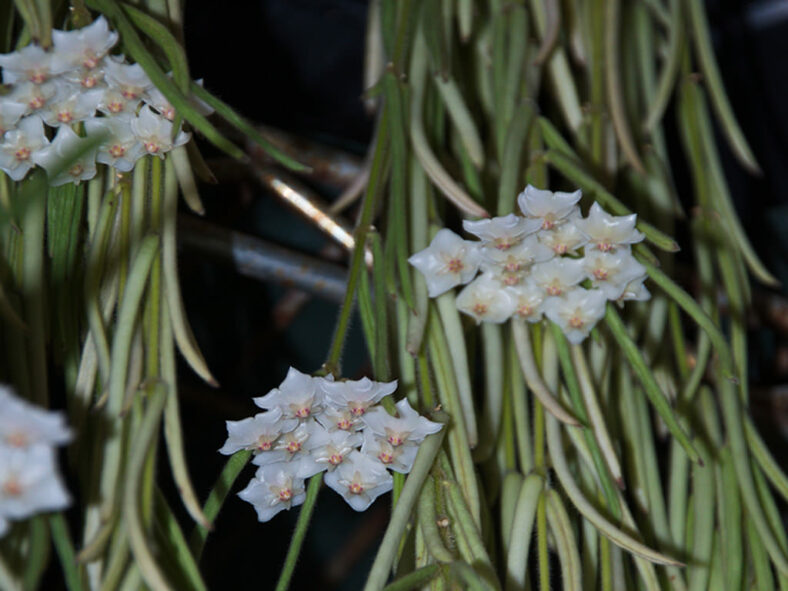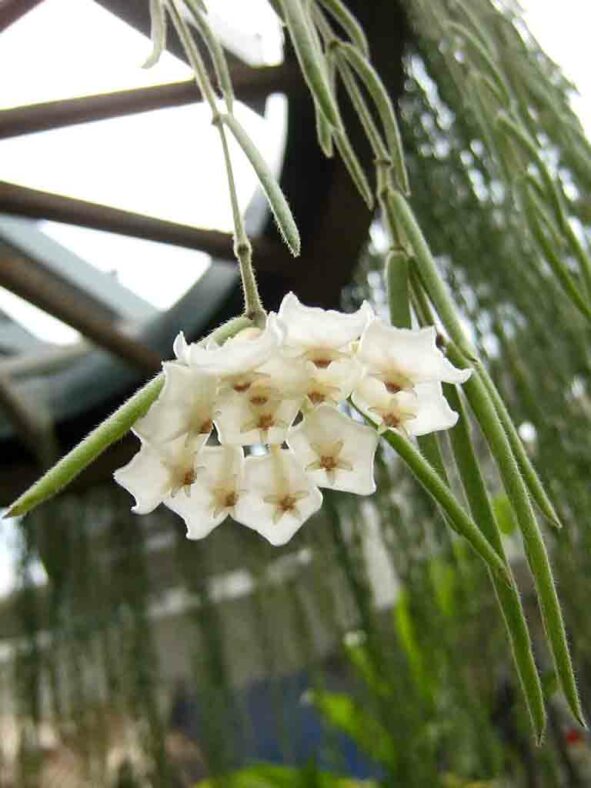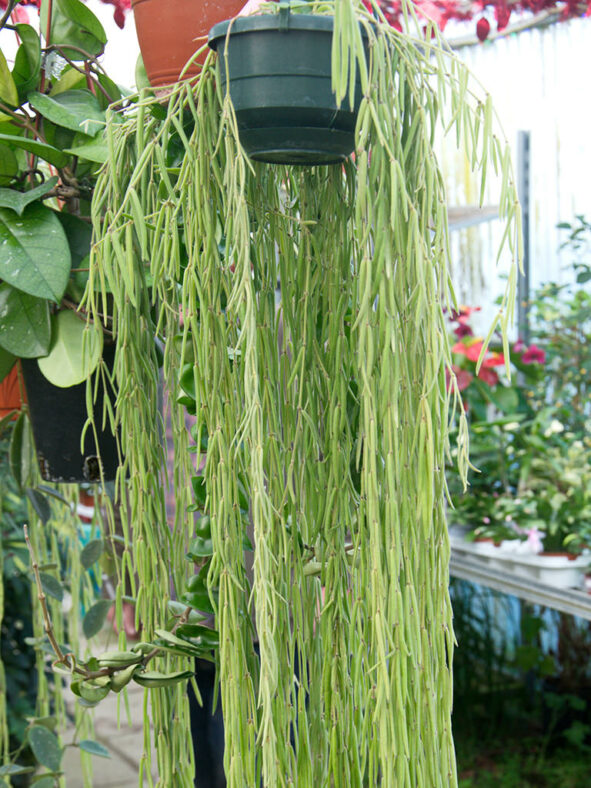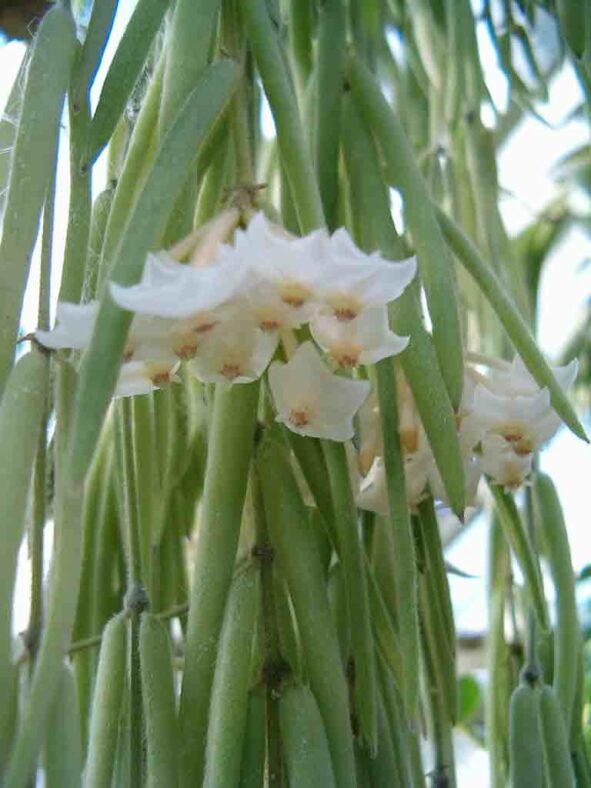Hoya linearis can be a beautiful addition to your home, but it is also known as one of the more challenging Hoyas to grow. However, you can cultivate this stunning plant with some extra care and attention.
Scientific Name
Hoya linearis Wall. ex D.Don
Synonym(s)
Hoya linearis var. nepalensis, Hoya linearis var. sikkimensis
Scientific Classification
Family: Apocynaceae
Subfamily: Asclepiadoideae
Tribe: Marsdenieae
Genus: Hoya
Etymology
The specific epithet "linearis (lin-AIR-iss)" means "consisting of lines, linear" and refers to the linear leaves of this species.
Origin
Hoya linearis is native to the Himalayas. It grows as an epiphyte in evergreen forests at elevations that range from 4,920 to 6,560 feet (1,500 to 2,000 m).
Description
Hoya linearis is a fascinating plant with slender, grayish-green stems that hang down and bear linear, hairy, green leaves. The stems can grow up to 5 feet (1.5 cm) long. The leaves are nearly cylindrical, deeply grooved beneath, measuring up to 2 inches (5 cm) in length and 0.2 inches (0.5 cm) in diameter.
During the fall, Hoya linearis produces lax umbels of 10 to 13 scented, star-shaped flowers with a pure white corolla and pink-tinged, yellowish corona. The flowers can reach up to 0.5 inches (1.2 cm) in diameter. They last for two weeks, and long, lance-shaped follicles with seeds with tufts of hair may follow if pollinated. The follicles can measure up to 2.6 inches (6.5 cm) long and 0.2 inches (0.5 cm) wide.

How to Grow and Care for Hoya linearis
Light: Even if this plant can tolerate lower light levels, it may become weak and leggy if the light is too low, producing fewer leaves and flowers. Therefore, keeping it indoors in bright, indirect sunlight is best.
Soil: Well-draining soil that provides excellent aeration and does not hold too much water is most important for growing a healthy plant.
Temperature: Hoya linearis thrives in hot and humid climates, so keep it away from drafty windows and doorways during the colder months. It grows best in USDA Plant Hardiness Zones 11a to 11b, with average minimum winter temperatures ranging from 40 to 50 °F (4.4 to 10 °C).
Watering: As this plant is sensitive to overwatering, soak the soil thoroughly during the spring and summer, but allow it to dry out before watering again. Otherwise, you will increase the risk of root rot, and your plant will not be happy. It is relatively dormant during the fall and winter and needs only moderate watering.
Fertilizing: While Hoya linearis is not a particularly heavy feeder, it can benefit from high-potassium fertilizer at half strength every two weeks during the growing season.
Repotting: This plant has shallow roots and does not require a deep container. It prefers to be slightly rootbound, so it does not need frequent repotting. If it outgrows its container, it should be repotted in spring.
Propagation: Although layering is the easiest way to propagate Hoya linearis, using stem cuttings is the most common method. Leaf cuttings can be more challenging, while starting the plant from seeds is the simplest but most time-consuming method. Take cuttings only when the plant is actively growing, and for best results, sow the seeds during spring and summer.
Learn more at How to Grow and Care for Hoya.
Toxicity of Hoya linearis
Hoya linearis is considered non-toxic, so it is safe around kids and pets.
Links
- Back to genus Hoya
- Succupedia: Browse succulents by Scientific Name, Common Name, Genus, Family, USDA Hardiness Zone, Origin, or cacti by Genus
Photo Gallery
Click on a photo to see a larger version.


